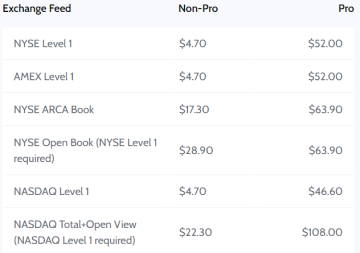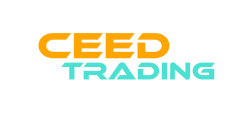
Many traders are attracted to the seemingly endless buying power and associated unlimited profit potential promised by futures and stock prop trading firms. If it sound too good to be true, it usually is. So what’s the catch here? Let’s explore the major disadvantages of prop trading.
There are three categories that may influence your overall eranings potential when going for a prop firm that need to be evaluated carefully. Among many other potential factors, the main disadvantages of prop trading arise from being classified as a market professional, unfavorable profit sharing, and whether your net trading profits are taxed as capital gains or ordinary personal income.
Who is considered a market professional?
When trading other people’s money, you’re generally considered a market professional by the exchanges. This can have costly consequences and significantly, and often unnecessarily, increase the fixed costs of your trading business.
Especially new traders will find this a steep hill to climb at the beginning of every month. Look at the breakdown of various fees and tax considerations below for potential savings of staying non-pro.
Market data fees
Being classified as a market professional comes at a steep cost. If you want to trade US stocks, basic Level 1 professional data for NYSE and Nasdaq will cost you $96.60/month and quickly go beyond $100 if you add Level 2 data or extra ECNs.
For futures traders, on the other hand, the CME Group has a special treat waiting for professional taders as it still refuses to pass on the the benfits of its merger synergies to end users. Each exchange will set you back $135 per month (it’s Level 2 data for pro). For multi-asset traders this is a whopping $545 just for market data at the CME, CBOT, NYMEX and COMEX.

Alternative: stay non-pro and pay less than $10/month for US stock Level 1 data (NYSE+Nasdaq). As of January 1, 2024, futures traders pay $10 for Top-of-Book Level 1 data for all 4 exchanges that are part of the CME Group. The group bundle for Level 2 data comes at a monthly cost of $39.
Potential savings: $86/month for stock traders requiring only Level 1 data and up to $535 for futures traders because Level 1 only is not available for pro subscribers
Software fees
Many equity prop firms only offer Sterling Trader Pro or Sterling LST to their traders, which can set you back anywhere between $150-280/month depending on your broker. Software rebates are usually only offered for significant trading volume.
In general futures prop traders have a broader range of product offerings to choose from with cost ranging from zero up to $80 per month. The majority of remote prop trading firms offers connectivity through the Rithmic data feed with a dedicated platform at no cost.
Alternative: stay non-pro and trade through our preferred broker Alaric Securities. They also offer Sterling Pro for $150 but their excellent in-house platform HAMMER is priced at $29.95/month with arguably better charting. The Hammer Lite version even offers zero commission trading with no software fee.
For futures traders there is no significant diffence between pro and non-pro pricing.
Potential savings: $120-250/month for stock traders
Profit share
In return for offering higher buying power, equity prop firms keep anywhere from 10-40% of your profits. On the futures side the going rate is from 10-20% of trading profits. If you don’t need hand holding from a prop firm anymore, you should seek out brokers offering equivalent leverage without the dreaded profit share agreement:
NEW! Prop trading with 90-95% profit share and non-pro data feed options at Fondexx:
Trading with more buying power
Fondexx offers 30:1 leverage on the performance bond in the Starter accounts and up to 50:1 in the pro accounts depending on the selected platform.
Available instruments
U.S. stocks, ETFs, options and cryptocurrencies are available at Fondexx. Traders can electronically locate hard-to-borrow (HTB) securities for shorting purposes.
Trading platforms
There is a wide selection of available platforms starting at $40/month from browser-based for MacOS users such as Sterling Web&Mobile to modular Windows-based for the most discerning professional day trader such as Takion or Sterling Trader Pro. Software fees are waived at certain volume thresholds. Check their website for specifics.
Best for experienced traders with more than $10,000 of risk capital:
Traders outside of the U.S. have the great advantage over their American competition that accounts below $25,000 are not subject to the pattern day trader (PDT) rule and the 4:1 intraday-margin limitation for non-professional traders.
Alaric Securites offers starting leverage from 6:1 up to 50:1 plus ultra-low volume-based commissions and direct market access, which allows you to route your orders to specific destinations, access various dark pools, and also receive rebates for providing liquidity.
In a nutshell, you’re getting professional conditions without the need of a large account or a prop trading firm.
Trading with flexibility
Get direct market access to self-directed exchanges, dark pools and algo venues. No trades limit, no “per trade” minimums, no PDT rule.
Available instruments
Trade US-stocks, ETFs and options with Alaric Securities. Access stable easy & hard-to-borrow inventory of stocks with no locates fees. Over 5500 stocks available for shorting!
Trading platforms
Get a free demo of HAMMER, a fully customizable, all-in-one professional trading platform which simplifies and empowers your trading experience.
Alternative: stay non-pro with Alaric Securities and keep 100% of your hard earned trading profits.
Potential savings anywhere between $1,000-4,000 per $10,000 in net profit.
How are my profits taxed?
When trading through a prop firm you’re an independent contractor or partner in a pass-through entity like an LLC. Consequently, your profits will be taxed at your personal income tax rate instead of a potentially much lower capital gains tax rate.
Capital gains vs. personal income tax
Personal income tax rates vary greatly across the world and the same is true for short- and long-term capital gains tax rates. So please do yourself a big favor and compare the applicable rates in your country to make an educated decision.
The paradox here is that taking the prop trading route for the purpose of increasing the income potential only makes sense if traders are willing to escape the progressive tax rates for higher incomes in their home country.
Alternative: stay non-pro and pay applicable capital gains tax (zero for profits from the sale of securities if you’re lucky enough to trade from Cyprus or Singapore etc.).
Potential savings per $10,000 in profit: depends on the difference between personal income and capital gains tax in your country.
Capital losses vs. nada
In addition to the profit share, you need to be aware of the fact that offshore prop trading firms “own” your capital losses. I know, nobody wants to talk about losses, but you have to account for all possible scenarios.
Alternative: stay non-pro and carry those unfortunate capital losses forward or backward to other tax years.
Potential savings: depends on how unfortunate your trading year was.
Disadvantages of prop trading – Conclusion
In particular for stock traders. the disadvantages clearly seem to outweigh the few benefits left over in the current remote prop trading business model unless one of the prop trading solutions at Fondexx fits your needs.
For futures prop traders it depends on whether the firm of their choice is a “fake” prop firm which does not need to classify you as a professional because you only trade a simulated account that you don’t have full discretion over.
For example, TopStep will classify you as a professional in the funded account, while other firms like Leeloo or APEX Trader Funding start you out in a funded sim account and then move you over to a “real” prop account once you’re long-term profitable.
So consider staying non-pro and treat yourself to a nice vacation with the substantial savings, compound your winnings to make even more money next year or head straight for a tax haven with sandy beaches and palm trees while keeping a big chunk of your profits!
Please share this post with other traders who may find this information useful.
Markus
MBA, former equities prop trader at Carlin Financial Group and WorldCo LLC. Now independent trader and mentor. Previously held FINRA Series 3, 7, 55, 63.
Website : https://www.ceedtrading.com
Understanding Risk Management: Introducing the Kelly Criterion Calculator for TradersFutures Trading
Digital Nomad Trader? Embracing Freedom by Traveling Around the World!Futures Trading
Navigating Prop Firm Trading Taxes: A Comprehensive Guide for Independent Contractors in the U.S. and BeyondFutures Trading
Decoding the WTI Crude Oil Crack Spread: Types, Influential Factors, and Trading Strategies in Energy MarketsFutures Trading
Unlocking the Soybean Crush Spread: Understanding, Influencing Factors, and Profitable Trading StrategiesFutures Trading
Unpacking the Efficacy of Bookmap Indicator in Financial Markets: Does Order Book History Really Matter?Day Trading Futures Trading Proprietary Trading
How does ADHD affect traders and what techniques can I use to overcome these effectsTrader Psychology Trading Psychology
6 Ways to Turn ADHD into Your Strength in TradingDay Trading Trading Psychology
When do adaptive order execution algorithms adjust their urgency from passive limit orders to active market orders?Futures Trading
How do adaptive order execution algorithms minimize market impact?Futures Trading


















0 responses on "Don't Miss These 3 Main Disadvantages of Prop Trading Firms"